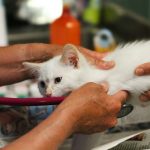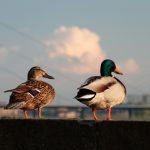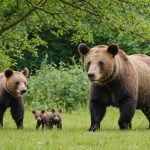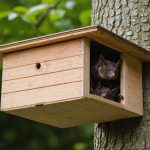Veterinary practices in the UK are stepping beyond traditional roles to forge powerful connections with wildlife conservation. By combining expertise in animal health with a passion for environmental stewardship, veterinarians are becoming vital players in preserving biodiversity. From rehabilitation efforts to local education initiatives, their contributions are making a significant impact. Explore how these dedicated professionals are not only caring for animals but also championing the ecosystems they inhabit. Discover the profound ripple effects of their commitment to wildlife conservation.
Overview of Veterinary Practices in Wildlife Conservation
Veterinary practices play a crucial role in wildlife conservation, acting as a bridge between animal health and ecosystem stability. These practices encompass a range of activities, from disease management and rehabilitation to research and policy development. In the UK, initiatives have been established to integrate veterinary expertise into conservation efforts, highlighting the importance of this collaboration.
Sujet a lire : What guidelines should UK residents follow to properly construct bat boxes in their vicinity?
The scope of veterinary involvement in wildlife conservation extends beyond mere treatment. Veterinarians are instrumental in disease surveillance, helping to prevent outbreaks that could devastate animal populations. Their expertise is also vital in the rehabilitation of injured wildlife, ensuring that animals can return to their natural habitats safely.
Historically, the role of veterinarians in wildlife protection has evolved significantly. Initially focused on domestic animal care, the field has expanded to address the complexities of wildlife health. This shift reflects a growing recognition of the interconnectedness of all species within an ecosystem. UK initiatives, such as partnerships with conservation organisations, have further underscored the importance of veterinary practices in maintaining biodiversity.
Avez-vous vu cela : How are UK’s urban greening projects increasing bird diversity in city centers?
In conclusion, veterinary practices are indispensable in wildlife conservation, providing essential services that support both animal health and ecosystem integrity. Their involvement is crucial for the success of conservation efforts, ensuring a balanced and thriving natural environment.
Case Studies of Successful Veterinary Initiatives
Examining successful initiatives in veterinary practices reveals invaluable insights into wildlife conservation. Several notable case studies from the UK illustrate the profound impact of veterinary involvement.
One such example is the collaboration between the Royal Veterinary College and conservation organisations, which focused on the rehabilitation of injured birds of prey. This initiative not only enhanced the survival rates of these majestic creatures but also contributed to the broader conservation efforts by promoting biodiversity.
Another significant project involved the surveillance of infectious diseases in wild deer populations. By implementing rigorous monitoring protocols, veterinarians were able to control disease outbreaks, safeguarding both the deer and the ecosystems they inhabit. This initiative underscores the importance of proactive disease management in conservation.
These case studies offer valuable lessons. Key takeaways include the necessity of interdisciplinary collaboration and the adaptation of veterinary practices to suit specific ecological contexts. Successful projects often share common traits: clear objectives, robust data collection, and continuous evaluation of outcomes.
By analysing these successful initiatives, veterinary professionals can refine best practices, ensuring more effective and sustainable conservation efforts in the future. This ongoing learning process is crucial for adapting to the ever-evolving challenges of wildlife conservation.
Interviews with Veterinarians on Conservation Efforts
Exploring the personal experiences of veterinarians in wildlife conservation offers invaluable insights into their roles and motivations. These professionals often face unique challenges, yet their dedication to preserving biodiversity remains steadfast. During conservation interviews, veterinarians share their journeys, highlighting both the obstacles and triumphs encountered in the field.
A common theme among these interviews is the motivation to make a tangible impact on wildlife health. Many veterinarians express a profound connection to nature and a desire to contribute to ecosystem stability. They often cite specific incidents, such as the successful rehabilitation of a critically injured animal, as pivotal moments that reinforced their commitment.
Professional perspectives reveal the complexities of collaborating with wildlife organizations. Veterinarians frequently engage in interdisciplinary efforts, working alongside ecologists, biologists, and policy makers. This collaboration is essential for addressing the multifaceted challenges of conservation.
Veterinarians also discuss the importance of continuous learning and adaptation. As wildlife conservation is an ever-evolving field, staying informed about emerging diseases and ecological changes is crucial. Through these insights, veterinarians not only enhance their own practices but also contribute significantly to the broader conservation community.
Challenges Faced by Veterinary Practices in Wildlife Conservation
Veterinary practices in wildlife conservation encounter numerous challenges that can hinder their effectiveness. One of the primary obstacles is the scarcity of funding and resources. Limited financial support often restricts the scope of veterinary projects, affecting the ability to conduct comprehensive disease surveillance and rehabilitation efforts. This resource constraint can lead to prioritising certain species over others, impacting overall wildlife protection.
Another significant barrier is navigating the complex legal and ethical considerations involved in wildlife treatment and rehabilitation. Veterinarians must adhere to strict regulations regarding the handling and treatment of wild animals, which can sometimes conflict with conservation goals. These legal frameworks are essential for ensuring humane treatment but can also pose challenges when rapid intervention is necessary.
Additionally, veterinarians face the difficulty of working in interdisciplinary teams. Effective conservation efforts require collaboration across various fields, including ecology, biology, and policy. This collaboration, while crucial, can be challenging due to differing priorities and approaches among professionals.
Despite these challenges, veterinarians remain committed to overcoming these barriers. By advocating for increased funding, engaging in continuous learning, and fostering interdisciplinary cooperation, they strive to enhance their contributions to wildlife conservation.
The Importance of Public Engagement in Conservation
Engaging the public is critical in bolstering veterinary conservation initiatives. Increasing public awareness about the importance of wildlife conservation helps gather support and resources necessary for these efforts. When communities understand the significance of preserving biodiversity, they are more likely to participate actively in conservation activities, thereby enhancing the overall impact of veterinary practices.
Community involvement is a cornerstone of successful conservation strategies. By involving local communities, veterinary practices can foster a sense of ownership and responsibility towards wildlife protection. This can be achieved through educational workshops, community events, and volunteer opportunities, which not only inform but also empower individuals to contribute to conservation efforts.
Several veterinary practices have spearheaded outreach programs to engage the public. For instance, educational campaigns focusing on the role of veterinarians in wildlife conservation have been instrumental in raising awareness. These initiatives often include interactive sessions where community members can learn about local wildlife species and the challenges they face.
Ultimately, public engagement serves as a vital support system for conservation initiatives. By cultivating a well-informed and involved community, veterinary practices can ensure sustained and effective conservation efforts, benefiting both wildlife and the ecosystems they inhabit.
Resources for Further Reading and Involvement
To deepen your understanding of veterinary conservation, several resources offer valuable insights and opportunities for community involvement. Publications like the “Journal of Wildlife Diseases” and “Conservation Biology” provide in-depth articles on recent developments and research in the field. These resources are essential for staying informed about the latest strategies and challenges in wildlife conservation.
Organisations and Publications
- Wildlife Conservation Society (WCS): Offers comprehensive reports and articles on global conservation efforts.
- The Wildlife Trusts: Provides detailed information on local conservation projects and how veterinary practices contribute.
- British Veterinary Association (BVA): Publishes guidelines and updates on veterinary roles in conservation.
Opportunities for Volunteering
Engaging with local communities through volunteering can significantly enhance conservation efforts. Many veterinary practices offer volunteer programs where individuals can assist with animal care and rehabilitation. Participating in these initiatives not only supports wildlife but also fosters a deeper connection to conservation work.
Educational Programs and Workshops
Numerous educational programs and workshops are available, designed to increase public awareness and involvement. These programs, often hosted by veterinary practices, cover topics such as species identification, habitat preservation, and the role of veterinary science in conservation. By attending these workshops, individuals can gain practical knowledge and skills to contribute effectively to conservation efforts.
The Future of Veterinary Practices in Wildlife Conservation
As the field of wildlife conservation continues to evolve, veterinary innovation emerges as a pivotal force shaping its future. The integration of advanced technologies and future trends is transforming how veterinarians approach conservation strategies, enhancing their ability to protect and rehabilitate wildlife.
One of the most promising emerging trends is the use of technological advancements such as drones and remote sensing. These tools enable veterinarians to monitor wildlife populations and habitats with greater precision, facilitating early detection of health issues and environmental changes. This proactive approach allows for timely interventions, preventing potential crises.
Moreover, the advent of genetic research and biotechnology is revolutionising veterinary practices. Techniques like DNA analysis and gene editing offer new possibilities for disease management and species preservation. By understanding genetic markers, veterinarians can develop targeted treatments and conservation plans tailored to specific species’ needs.
Looking ahead, the evolution of veterinary roles in conservation is expected to become even more collaborative. Interdisciplinary partnerships with ecologists, technologists, and policymakers will be crucial in addressing complex challenges. As conservation strategies become more sophisticated, veterinarians will increasingly act as integrators, bridging the gap between technology and ecological preservation, ensuring a sustainable future for wildlife.
Conclusion: The Ongoing Role of Veterinary Practices
In the realm of wildlife conservation, veterinary practices have consistently demonstrated their indispensable impact. Their contributions extend from disease management to the rehabilitation of injured animals, showcasing a profound commitment to preserving biodiversity. The ongoing efforts of veterinarians are pivotal in maintaining the delicate balance of ecosystems, ensuring the survival of countless species.
The future of conservation hinges on sustained support and collaboration. The veterinary impact is amplified through partnerships with ecologists, policymakers, and the public. Such collaborations are crucial for addressing the complex challenges posed by environmental changes and emerging diseases. By working together, these diverse groups can develop innovative strategies that bolster wildlife protection.
For readers, the call to action is clear: get involved in conservation efforts. Whether through volunteering, supporting educational programs, or advocating for increased funding, every action contributes to a collective goal. By participating in these initiatives, individuals can play a vital role in shaping the conservation future. This engagement not only benefits wildlife but also enriches our understanding of the natural world, fostering a deeper connection to the ecosystems that sustain us all.
















